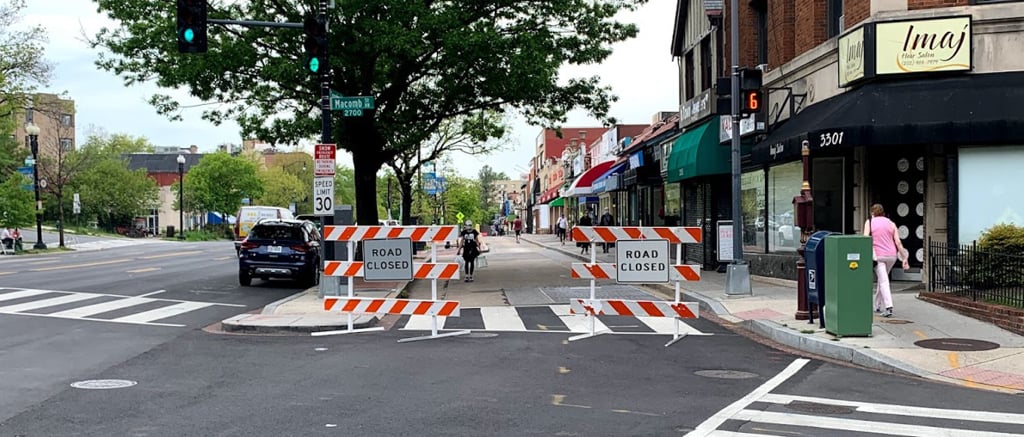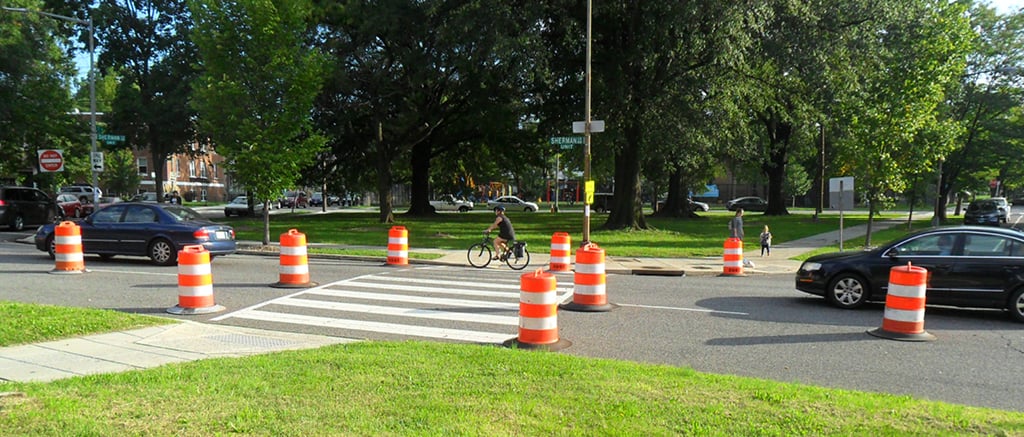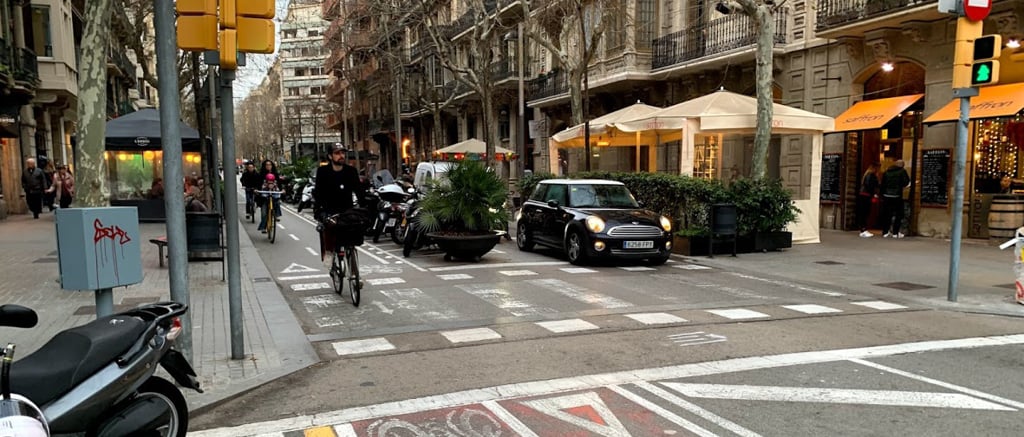The COVID-19 pandemic is a truly unprecedented experience. Millions of Americans—and the world at large—remain at home, while streets, schools, offices, stadiums, stores, and airports lie dormant. Familiar landscapes normally crawling with people are instead largely empty. The world is waiting for the virus to subside and a vaccination to be developed. Currently, there are many uncertainties surrounding the pandemic’s economic toll and long-term societal impacts, but one thing is certain: At some point, the quarantine will end, and life will resume. But, what will life look like? What social distancing measures will remain in place?
Gradually, millions of the world’s “non-essential” employees will make their way back into offices, hotels, and restaurants, and they will all make a conscious decision on how to commute and travel safely to their worksites while respecting social distance. Rather than reacting and adapting to a post-COVID-19 travel pattern, cities have a unique opportunity to reshape and influence the restart through physical, low-cost interventions and strategic planning focused on active transportation. The impacts of these strategies can create lasting change to travel patterns that may remain with us for generations. This is an unprecedented opportunity; one that may never come again in this lifetime.
The Opportunity to Reshape Transportation
Recent trends in Transportation Demand Management (TDM) have included fundamentals of behavior sciences and how they can be applied within TDM to break society’s harmful habits, such as commuting via single-occupancy vehicle, influencing the replacement of this transportation choice with beneficial commuting behaviors, such as taking mass transit, carpooling, or bicycling. Behavior science research shows us how life altering events typically change personal habits–offering the opportunity to re-assess aspects of how we live, work, and play–including our commuting and mobility choices. In practice, a dramatic life event is often linked to personal life events, such as moving, changing jobs, or getting married, but clearly a pandemic by definition–like COVID-19–falls into this category of “life altering.”
As we move forward beyond COVID-19, what opportunities exist? What will each of us re-assess and change behaviors on? How will it transform our transportation decisions? How will this impact society?
Our communities?

As the pandemic slowly winds down, millions will begin to reconsider how they should get back to work. If unswayed, many commuters may seek to avoid transit, ridesharing, or even ride-hailing (Uber/Lyft) to maintain social distancing. By default, a majority of commuters, possibly larger than
pre-COVID-19, will return to their vehicles. In time, business as usual may result in status quo: traffic congestion, pollution, noise, and collisions. On the other hand, will our behaviors be changed? Working from home and active transportation may be more attractive than ever for many.
Planning for a post-COVID-19 restart that focuses on active transportation could result in lasting, permanent impacts on commuting patterns. Imagine—as the world slowly awakes, it will take some time for travel patterns to resume. In the meanwhile, a combination of reduced vehicular traffic, a reluctance to utilize public transportation, the presence of micromobility, and world class active transportation facilities can suddenly make cities as bicycle friendly as Amsterdam or Copenhagen.
Rapidly expanding active transportation networks is not just for the altruistic purpose of fighting climate change, protecting the environment, or improving residents’ long-term health by adopting an active lifestyle. There’s an impending immediate public health benefit: It’s simply the best way for people to travel post-COVID-19—without clogging streets, while safeguarding the health and safety of residents.
Providing active transportation facilities, such as designating active transportation travel lanes on roadways are inexpensive, require almost no additional construction, and are easy to implement—just lay some paint (or even cones or flex posts) on the ground. Best of all, cities can apply tactical urbanism approaches to make these treatments temporary should they not work as intended. If the intervention generates a critical mass of active transportation users on streets, then this will only encourage more active transportation users—an automatic, positive feedback loop!

The Post-COVID-19 Playbook
While some states are already returning to business, many anticipate lifting travel bans and opening non-essential businesses by June. This provides limited time to prepare and set the stage to influence healthy, sustainable travel patterns. The clock is ticking, but city builders have a head start to plan, prepare, and act. Cities and other municipalities, as well as state departments of transportation, should consider the following as part of their Post-COVID Playbook.
Start where you are. Many cities have already been thinking about active transportation network needs for some time. Can these projects be fast-tracked or reprioritized so that they are available to the post-COVID-19 commuter? Can designs be tweaked or can intermediate phases be rapidly implemented?
Invite creativity through tactical urbanism. Tactical urbanism refers to the concept presented by Janette Sadik Khan: Rapidly implementable, temporary facilities that can be generated using minimal resources. To do this, cities will need to anticipate demand, study their road network, and use data to inform focus. Designate active transportation lanes using paint or cones, and track success. Treat these measures as pilot projects and learn from them. Tweaks along the way are more than welcomed. Cones on a street tomorrow might become world-class active transportation facilities or shared-streets five years from now. These approaches are already applied in Europe, which is experiencing the pandemic ahead of the U.S.

Remember we are all in this together. The modern transportation network consists of both public and private providers who all have a responsibility to the commuter, whether for public good or their bottom line. Cities should be working hand-in-hand with the private sector as part of the post-COVID-19 recovery plan. For example, encourage micromobility companies to increase vehicle supply or make their services more accessible to users through subsidies, or enter into partnerships with bicycle shops to decrease bicycle serving costs.
Understand policy is a game changer. Coming out of this disaster, a new disaster awaits: a crush on our roadway network, a demise in air quality, and increases in death from traffic fatalities. To prevent a return to default travel patterns, policy can help balance the equation in favor of active transportation. For example, Washington DC, recently passed legislation giving employees the chance to trade in their parking space for extra cash.
Get the word out. During the COVID-19 crisis, many are waiting for the latest update of this evolving situation. Use media—in a variety of forms—as an advantage to encourage more commuters to travel via active travel modes. Communication and education can help create that essential critical mass of users—and inhabitants that are more welcoming to multimodal environments.
How Can VHB Help
Rather than adapt to a post-COVID-19 world, cities have the opportunity to shape the restart. By focusing on implementing active transportation projects and tactical urbanism approaches, cities can encourage long-lasting substantial behavior change via a thoughtful redesigned transportation network while keeping citizens safe. VHB is here to help you understand potential options, strategize solutions, and capitalize on this opportunity to reshape our cities for the future. Contact Federico Tallis today to start planning for tomorrow.



